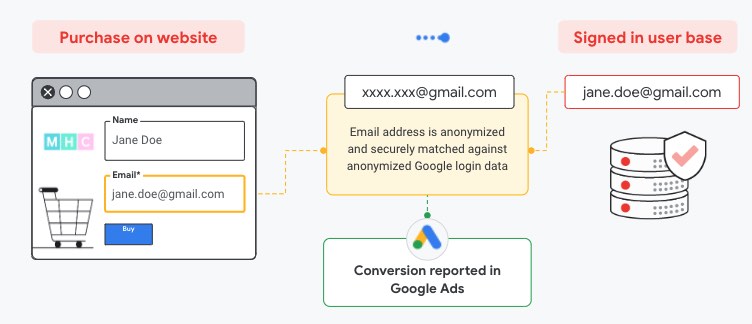How Conversion Data Improves Google Ads Automation
[ad_1]
Google’s shift to automated advert administration continues. Lots of my articles tackle how advertisers can use that automation whereas sustaining a degree of management. What advertisers typically overlook, nonetheless, is conversion monitoring.
Google is aware of to point out an advert to a searcher who varieties within the focused key phrases. However Google can not optimize efficiency except the advertiser has enabled conversion monitoring.
Most advertisers have carried out that. However most haven’t configured it accurately. Listed here are 4 steps to enhance Google Adverts’ automation (and machine studying) by way of conversion monitoring.
4 Steps to Enhance Google Adverts Automation
Arrange Enhanced Conversions. I touched on Enhanced Conversions last month. It’s price a deeper dive.
Enhanced Conversions observe efficiency even when cookies are restricted — a essential characteristic for cookieless browsers — by matching hashed buyer information from an advertiser’s website with Google’s.

Enhanced Conversions observe efficiency by matching hashed buyer information from an advertiser’s website with Google’s, avoiding the necessity for cookies. Picture: Google.
A current case research from Google reported U.Ok. retailer ASOS noticed an 8.6% carry in gross sales from search advertisements after implementing Enhanced Conversions.
Google suggests the “maximize conversion worth” bid strategy for advertisers with a minimum of 50 conversions in 30 days. An advertiser with 40 conversions in 30 days may attain 50 by implementing Enhanced Conversions.
Advertisers arrange Enhanced Conversions by means of a global site tag or Google Tag Manager. Enhanced Conversions apply solely when Google Adverts is the conversion supply — not Google Analytics or offline conversions. To set off a conversion, customers should submit information comparable to an e-mail tackle on the designated web page. Web page views don’t apply.
Select the appropriate attribution mannequin. Final-click attribution is a typical blunder. The mannequin assigns all conversions to the final clicked key phrase and advert. It overstates model campaigns in search as a result of model key phrases are usually the final click on within the shopping for cycle.
For instance, a shopper might click on an advert for a non-brand key phrase comparable to “basketball footwear” and go to Nike’s web site to analysis. Per week later, she might sort “nike basketball footwear,” click on the model advert, and make a purchase order. The model key phrase receives all of the credit score regardless of the non-brand time period having an necessary position. Therefore essential key phrases that assisted within the conversion course of are undervalued.
Google affords six attribution fashions for conversions:
- Final click on,
- First click on. The primary click on that results in a conversion receives all of the credit score.
- Linear. All clicks obtain equal credit score for the conversion.
- Time decay. Clicks that happen nearer to the conversion obtain extra credit score.
- Place-based. Forty p.c of the credit score goes to every of the primary and final clicks, whereas the remaining clicks cut up 20%.
- Knowledge-driven. Credit score is distributed primarily based on previous conversions.
Knowledge-driven attribution is good as a result of it most precisely provides credit score to every click on. However to work effectively it wants a minimum of 300 conversions and three,000 advert interactions — e.g., clicks, views of video advertisements, requires name extensions. This mannequin assigns acceptable credit score to all key phrases and advertisements.
Within the absence of sufficient information, I want position-based attribution as non-last clicks mix to obtain 60% of the credit score.
Use conversion values. Assign a price — static or dynamic — to all conversion varieties. By updating the pixel dynamically, you’ll be able to observe the income of every buy. Or you’ll be able to assign a static worth for nonmonetary conversions, comparable to signing up for a publication. Including a price is a requirement of the “maximize conversion worth” bid technique.

Assign a price — static or dynamic — to all conversion varieties.
Use campaign-specific objectives. When you’ve arrange Enhanced Conversions, instruct Google on the bid methods every marketing campaign ought to optimize for at Settings > Targets. The alternatives are “account” or “campaign-specific.” By default Google will optimize by account, that means your advertisements will present to any searcher who’s more likely to convert for any purpose.
Marketing campaign-specific objectives will optimize towards a number of particular conversions, comparable to purchases, publication signups, or kind submissions.

Instruct Google on the bid methods every marketing campaign ought to optimize for — “account” or “campaign-specific.”
[ad_2]
Source link

